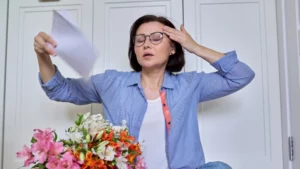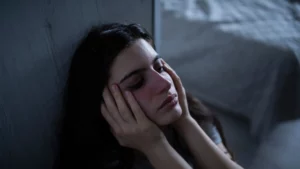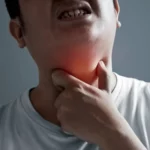Imagine facing intense, throbbing headaches that strike suddenly, causing excruciating pain around one eye. Now, picture navigating this agony alongside hormonal shifts and unpredictable mood swings. This is the reality for some individuals dealing with both cluster headaches and perimenopause.
As we delve into the relationship between cluster headaches and perimenopause, we gain insight into a realm where pain intertwines with hormonal changes. Unraveling this connection is vital because it holds the potential to enhance the lives of those who grapple with these challenges.
By recognizing how these two phenomena might influence each other, we can pave the way for more effective strategies that alleviate suffering and restore comfort during this crucial phase of life.
Understanding Cluster Headaches
Cluster headaches are more than just headaches; they are intense, focused bursts of pain that occur in cycles.
These cycles can last for weeks or months, with the pain often centered around one eye. People experiencing cluster headaches might describe the pain as a stabbing sensation or a burning feeling.
These headaches tend to strike suddenly, making them different from the gradual onset of tension headaches.
Characteristics of Cluster Headaches
Cluster headaches are known for their distinct characteristics. The pain is often sharp and severe, leading to restlessness and agitation in those affected.
Read Also: How Long Does Menopause Last After Total Hysterectomy?
The affected eye might become watery or red, and nasal congestion can also accompany the headache. Unlike migraines, sensitivity to light and sound is less common in cluster headaches.

Patterns and Triggers
Cluster headaches occur in patterns, which is why they’re called “cluster” headaches. These patterns involve recurrent episodes of headaches during specific periods.
The exact cause of cluster headaches isn’t fully understood, but certain triggers can bring them on. Triggers might include alcohol consumption, smoking, changes in sleep patterns, and certain foods.
Relationship of Cluster Headaches and Perimenopause
Exploring the Link Between Hormonal Changes and Cluster Headaches during Perimenopause
Perimenopause is a phase in a woman’s life characterized by hormonal fluctuations and shifts in the menstrual cycle.
During this transitional period, which typically occurs in the late 30s to early 50s, hormonal changes can bring about various physical and emotional changes.
What is Perimenopause?
Perimenopause marks the gradual transition from reproductive years to menopause. Hormone levels, particularly estrogen and progesterone, start to fluctuate irregularly. This hormonal roller coaster can lead to a range of symptoms, including hot flashes, mood swings, irregular periods, and sleep disturbances.
Hormonal Influence on Cluster Headaches
Estrogen is thought to play a significant role in the occurrence of cluster headaches. Changes in estrogen levels could impact the sensitivity of blood vessels and nerve pathways involved in headache development.
During perimenopause, when estrogen levels fluctuate, it’s plausible that these hormonal shifts could contribute to the onset or exacerbation of cluster headaches.
Unraveling the Mechanism
The exact mechanism behind the link between perimenopause and cluster headaches is still under investigation.
Researchers are exploring how hormonal changes might interact with genetic predispositions and other factors that contribute to headache development.
Unraveling this intricate web of connections could lead to more targeted treatments and interventions.
Managing Cluster Headaches during Perimenopause
Effective Strategies for Alleviating Cluster Headaches in the Midst of Hormonal Changes
Managing cluster headaches during perimenopause requires a tailored approach that addresses both the unique characteristics of cluster headaches and the hormonal shifts associated with this transitional phase.
Medical Approaches
Consulting a healthcare professional is crucial for accurate diagnosis and guidance.
Depending on the severity and frequency of cluster headaches, various medical treatments can be considered. Pain-relieving medications, such as triptans and oxygen therapy, aim to alleviate the intense pain during an episode.
Preventive medications might also be prescribed to reduce the frequency of cluster headache cycles.
Read Also: How to Boost Immune System during Menopause?
Lifestyle Adjustments
Lifestyle changes can play a significant role in managing cluster headaches during perimenopause.
Establishing a regular sleep schedule and prioritizing sufficient sleep can help prevent headache episodes triggered by sleep disruptions.
Avoiding alcohol, certain foods, and smoking – known triggers for cluster headaches – can contribute to symptom reduction.

Stress management techniques, such as deep breathing exercises and meditation, may also help alleviate headache intensity.
Hormone Therapy
Given the potential connection between hormonal fluctuations and cluster headaches, hormone therapy might be considered for perimenopausal individuals.
Hormone therapy aims to stabilize hormone levels, which could indirectly influence the occurrence of cluster headaches.
However, the decision to undergo hormone therapy should be made in consultation with a healthcare provider, considering individual medical history and risks.
Seeking Professional Guidance
Managing cluster headaches during perimenopause requires a comprehensive and individualized approach.
Healthcare professionals with expertise in headache management and hormonal health can provide personalized recommendations.
Read Also: Menopause and Anger Toward Husbands: All You Need to Know
It’s important to communicate openly with your healthcare provider about your symptoms, triggers, and concerns to collaboratively develop an effective treatment plan.
Conclusion
In conclusion, understanding the intersection of cluster headaches and perimenopause offers valuable insights into managing these conditions effectively.
The potential link between hormonal changes during perimenopause and the onset or exacerbation of cluster headaches underscores the importance of holistic approaches to treatment and relief.
By seeking professional guidance, exploring medical interventions, and making lifestyle adjustments, individuals can navigate the challenges of cluster headaches within the context of perimenopause.
As research continues to unveil the intricate relationship between hormonal fluctuations and headache occurrences, the path toward improved well-being becomes clearer.
Empowered by knowledge and supported by healthcare professionals, those experiencing both cluster headaches and perimenopause can strive for enhanced quality of life.
Frequently Asked Questions (FAQs)
1. What are cluster headaches?
Cluster headaches are intensely painful headaches that occur in patterns, often centered around one eye. They can cause severe pain and are accompanied by symptoms like watery eyes and nasal congestion.
2. What is perimenopause?
Perimenopause is the transitional phase before menopause, characterized by hormonal fluctuations and irregular menstrual cycles.
3. Is there a connection between cluster headaches and perimenopause?
Recent research suggests a potential link between hormonal changes during perimenopause and the occurrence of cluster headaches.
4. How do hormonal changes influence cluster headaches?
Hormonal fluctuations, particularly estrogen, could impact blood vessels and nerve pathways associated with headache development.
5. What medical treatments are available for cluster headaches during perimenopause?
Medical treatments include pain-relieving medications, oxygen therapy, and preventive medications to reduce the frequency of cluster headache cycles.
6. Can lifestyle adjustments help manage cluster headaches?
Yes, lifestyle changes such as maintaining regular sleep patterns, avoiding triggers like alcohol and certain foods, and managing stress can contribute to reducing cluster headache episodes.
7. Is hormone therapy an option for managing cluster headaches during perimenopause?
Hormone therapy might be considered, but it’s essential to consult a healthcare provider to weigh the benefits and risks based on individual medical history.
8. How important is professional guidance in managing cluster headaches during perimenopause?
Professional guidance is crucial for accurate diagnosis, personalized treatment plans, and monitoring progress.
9. What’s the significance of addressing overall well-being in managing cluster headaches and perimenopause?
Prioritizing holistic well-being through healthy lifestyle habits, balanced nutrition, exercise, and relaxation techniques can contribute to better headache control and overall quality of life.
Medical References
- May A, Bahra A, Büchel C, Frackowiak RS, Goadsby PJ. Hypothalamic activation in cluster headache attacks. Lancet. 1998;352(9124):275-278. doi:10.1016/s0140-6736(98)02470-2
- Kelman L. The Triggers or Precipitants of the Acute Migraine Attack. Cephalalgia. 2007;27(5):394-402. doi:10.1111/j.1468-2982.2007.01303.x
- Louter MA, Wilbrink LA, Haan J, et al. Cluster headache and the hypothalamus: investigation of hypothalamic involvement in cluster headache. Cephalalgia. 2013;33(13):1151-1158. doi:10.1177/0333102413490348







